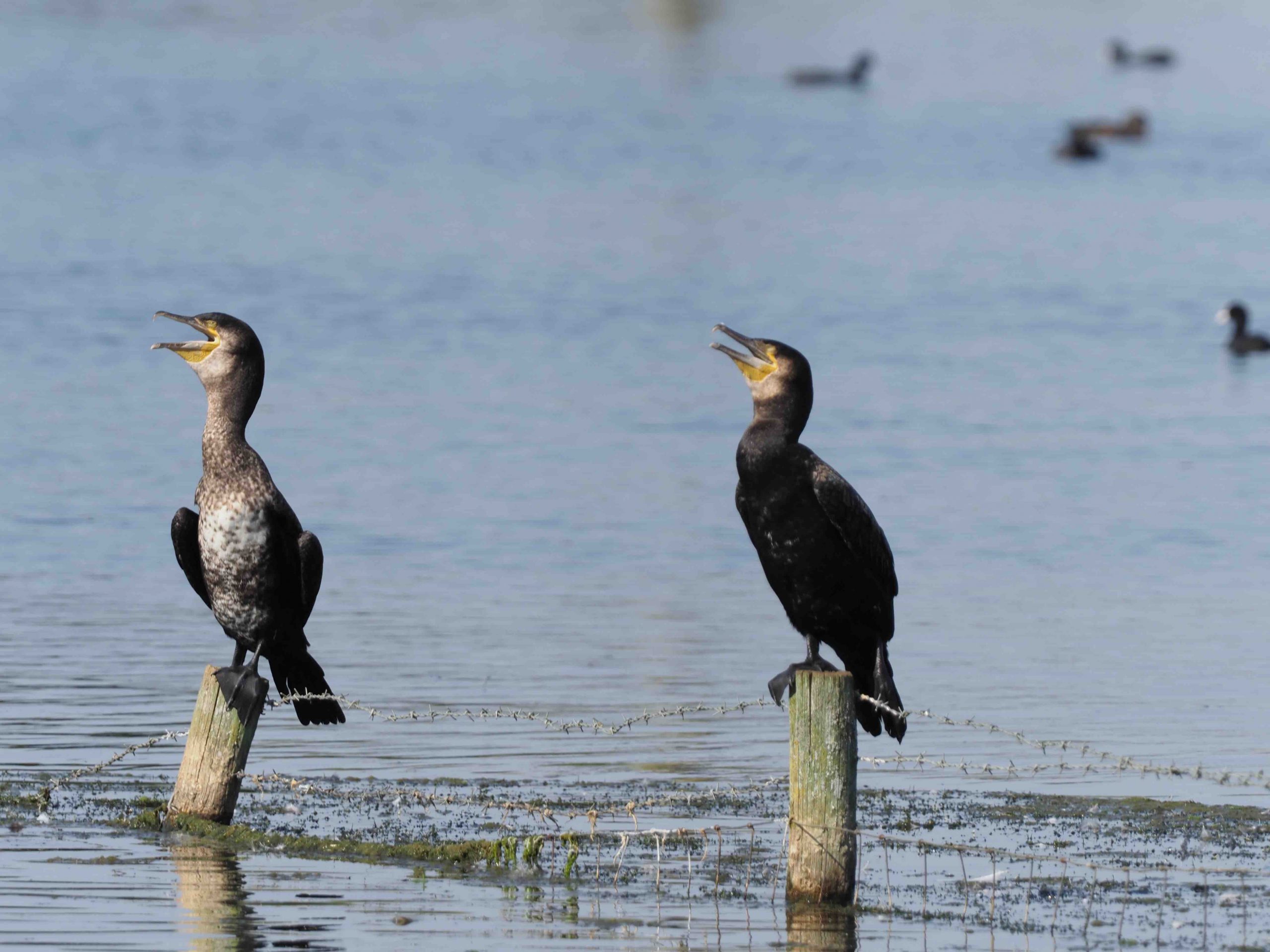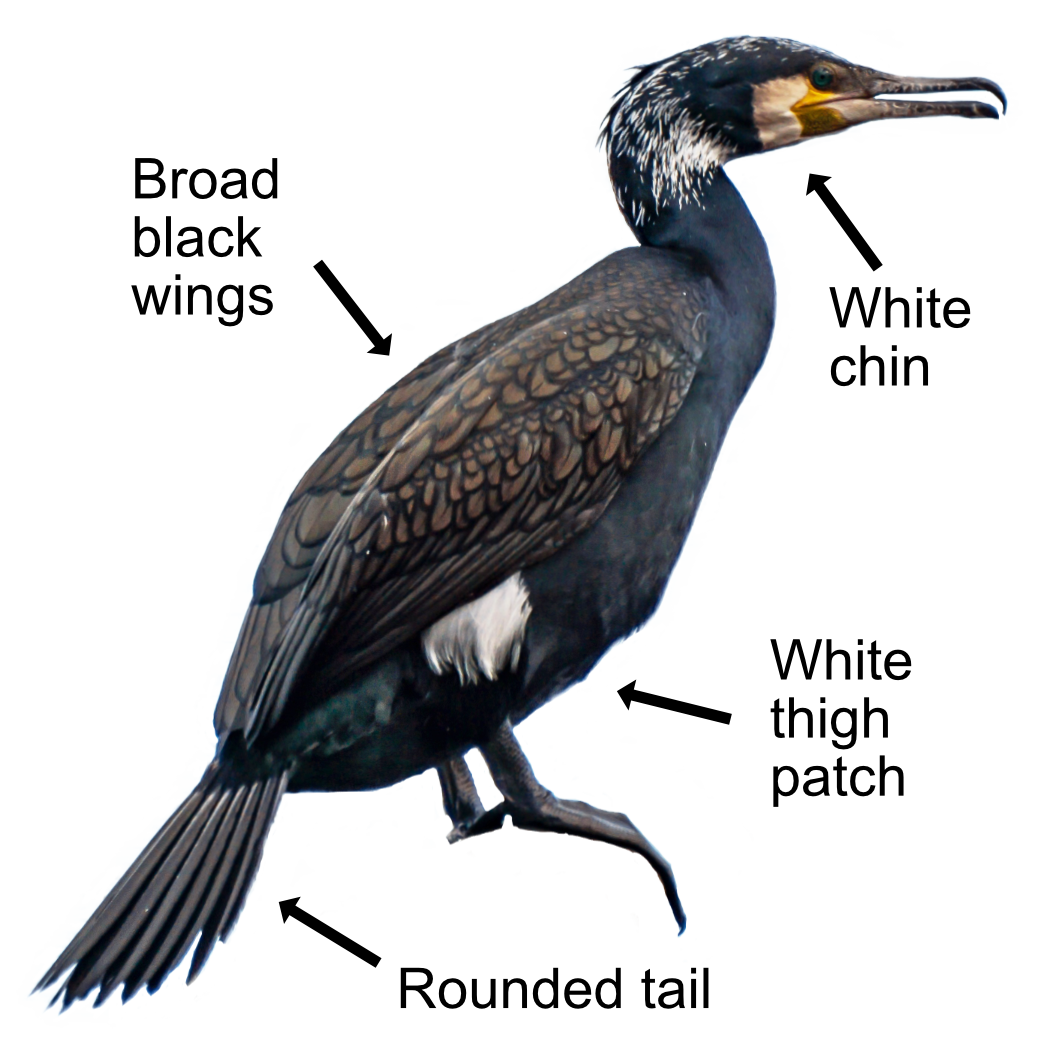
Cormorants look like they should be on a heroic knight's shield, standing like a black heraldic bird with their wings outstretched. Ornithologists are not sure if having their wings out is to dry them or to aid the digestion of all the fish they have eaten. Cormorants are a regular sight on sea cliffs, reservoirs, gravel pits and large rivers.
Cormorants are mainly black, with broad wings, a long rounded tail, a long thin neck and a long bill. They have a white chin and white thigh patches which are easiest to see when they are flying. Males are typically larger and heavier than females. Young Cormorants are dark brown with pale, almost white, underparts. When flying they look a bit like a black goose with their long necks, often flying barely above the water's surface. They are mainly silent with any calls being made at their nest sites (rookeries). They make a gurgling, barking "agock-agock-agock" sound.

Cormorants swim low down in the water with their bill up-tilted. They are usually seen singly, but numbers will gather at roosts and at feeding sites. They dive with a little leap forwards and will disappear for nearly a minute while they hunt for fish to depths of up to 6 metres. They can hold their breath for an amazingly long time. Their principal food is fish, big fish, especially flat fish like plaice but also cod and trout. Studies show that their hearing has been especially evolved for underwater usage, possibly to aid the detection of fish in murky water. They are a fish eating machine which does not make them popular with fishermen. In China, people are clever enough to use Cormorants to fish for them by tying a string round their necks so they can't swallow what they catch. Why mess about with a rod and line when you can use a fish catching expert?
Cormorants nest on lake islands or in trees, in colonies which can number a 100 nests or more. They will use the same nest site to breed year after year. Unfortunately, eating all that fish produces some pretty deadly poo. It can kill trees! I am not sure if it is very clever killing the tree your nest is in? The male Cormorant mainly builds the nest, using whatever is available like twigs, reeds, or even seaweed. Both parents then incubate the 3-4 eggs, which hatch after 30 days. Mum and dad then feed the youngsters who can fly after 50 days. The youngsters remain dependent on mum and dad for a further 40-50 days, returning to the nest to be fed, before finally, sulkily leaving home. Young Cormorants do not breed themselves until they are 4 or 5 years old.
The Cormorant is a widespread resident with 9,000 breeding pairs in Britain, which swells to a winter population of over 40,000 individuals when the pesky Europeans come over here to nick all our fish! Cormorants were originally a coastal bird though have now moved more inland. This has brought them into conflict with commercial fishing, like trout lakes, as they love an easy to catch supper. While they do take some fish, long-term damage is not proved and Cormorants, thankfully, remain protected.
Their Latin name is 'phalacrocorax carbo'. Trying saying that with a fish in your mouth. The 'phalacrocorax' comes from the Greek 'phalakros' for 'bald' and 'korax' for 'raven'. While 'carbo' is Latin for 'charcoal'. Charcoal raven I can understand, but bald?